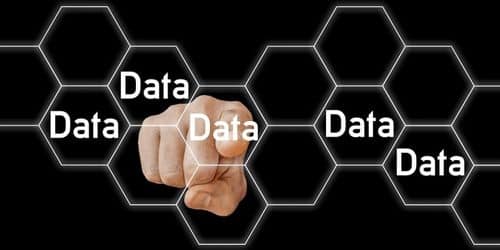Entity relationship diagrams can be very useful while data modeling to both organize and improve any database or process. Provided that the chart was created expertly, an ERD becomes an informative, yet simplified map that visually represents and connects the primary entities in perfect clarity. However, that clarity would be contingent upon the fact that the diagram’s intended recipients know how to read ER diagrams.
If you are not particularly familiar with data flowcharts, then reading an ER diagram may initially feel like a daunting task. The good news is that reading ER diagrams is easy and intuitive by design, but the reader will still need to know some of the basics to get started. Let’s get acquainted with those basics next.
Entities
Although there are no strict geometric shape codes that all ER diagrams must follow, you will generally find entities represented as datasets inside rectangles. Note that the design may vary depending on which entity relationship diagram tool was used to create the flowchart and the creator’s own choices. Nevertheless, they will always be easily identifiable, as entities will always be the interconnected subjects in any entity relationship diagram.
Business diagrams may include primary entity classifications like Product, Manufacturer, Vendor, Retailer, Customer, etc. Entity relationship diagrams meant to represent a hospital environment might have entities such as Doctors, Nurses, Departments, Patients, etc. Strong entities will generally be encased in a single rectangle (or any other chosen shape), while weak entities will be encased inside an additional rectangle to mark the fact.
Relationships
The relationships which connect the various entities are descriptive datasets, traditionally encased within a rhombus/diamond shape. If a relationship description is encased within two diamonds (or the chosen shape) instead of one, it indicates a weak relationship.
As far as the included data is concerned, relationships are meant to describe how and why the two entities are connected, as well as their interactions within the given setting. In a hospital setting, a Patient entity could be connected to a Doctor Entity via the Relationships defined as Diagnosis, Treatment, and Prescription. The same Patient might be connected to another Doctor from a different Department via only the Relationship defined as a Referral.
Attributions
Attributions are used to define, categorize, and/or value both entities and relationships, which in turn may decide whether they are marked as strong or weak. The exact nature of an attribute is difficult to define without context, but it can be descriptive and multivalued/single-valued.
Generally, you should find the attributes (if applicable) inside oval shapes on entity relationship diagrams. Note that the number of values may or may not have anything to do with weakening or strengthening the entity or the relationship either, depending on the context. It is advisable to read the data to decide in this case, rather than relying purely on the symbols.
Cardinality
Cardinality is often represented on entity relationship diagrams with splitting lines and arrows. If you see a single entity connected to three different entities via a single relationship line that splits into three arrows, that’s known as a one-to-many cardinality. A doctor diagnosing three different patients will have a similar representation and so will a patient who is being treated by doctors from three separate departments.
If the split lines don’t have any arrows on them, but there is an arrow on the other side, it indicates what is known as a many-to-one cardinality, which is essentially a reversal of the situation defined above. The arrow(s) on cardinal lines generally indicate the flow of that relationship/connection. A one-to-one cardinality is not likely to have any splits, but there may still be an arrow.
Colors
Color coding entity relationship diagrams are common practice now and it’s a reliable and intuitive way to make the visualization more effective and easier to read. If any color codes are used to simplify the flowchart, you will also find an index close by that will specify what each color represents. In fact, every symbol used in an ER diagram should be properly and clearly indexed by the chart’s creator.
This holds particular importance because some symbols may hold completely different and sometimes, even opposing meanings in the context of the chart. For example, the aforementioned one-to-many cardinality might be represented by multiple arrowheads on the same relationship line, instead of the split ends.
Related Articles
- BUSINESS PROCESS MAPPING TOOLS: Uses, Free Tools & Guide
- Liquid Assets: Is Stock a Liquid Asset? Meaning and Practical Examples
- SUBWAY LOGO : The Evolution, History and Mystery Explained
- BUILDING A BUSINESS RELATIONSHIP: Effective Steps & Tips for Any Business (All You Need)
- Project Quality Management Planning Guide (Tools & Software)






